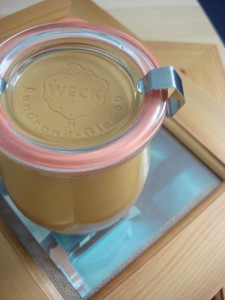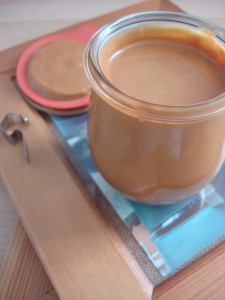Generally speaking, when we encourage patrons to try new things in the shop, they’re pretty receptive – and really, why not? Hand anyone a little chunk of chocolate to nibble on and they’re almost certain to like it, or at least appreciate the attempt.
The only glaring exception is white chocolate. This is not to say that we don’t get a lot of customers who adore the stuff – we do. Nor is it to say that we haven’t converted a fair chunk of former white chocolate-haters – we have; most are floored when they taste the different kinds we have in the shop, from our own Chocophilia ‘Lemon Dream’ and ‘Roses Are Red’ bars to the absolutely fantastic Amedei ‘Pistacchi’ bar. But it is perhaps the most polarizing chocolate we carry, and there are many who just can’t get behind it.
Still, if any of you reading out there are thinking of giving it another chance, be sure to consider the following:
– It’s important not to think of white chocolate as ‘chocolate’ in the traditional sense, but rather as a confection; you should expect it to be sweeter and less complex than the chocolate you may be used to, but nonetheless enjoyable.
Most good white chocolate will be made up of no more than cocoa butter, sugar, milk solids, vanilla and soy lecithin, in this order. Because of the high percentage of cocoa butter, it will not be pure white, but more of an ivory, off-white colour.
While many like to enjoy white chocolate as is, keep in mind that it works wonderfully in baking and can be combined with a number of ingredients (lemon, nuts, mint, fresh or dried fruit) quite successfully.
In addition to the aforementioned bars, we also stock bags of Valrhona Ivoire 35% couverture in the Home Chef section and we are constantly experimenting with white chocolate in our truffle case. Last but not least, here’s a recipe for caramelized white chocolate, if you decide on some experimentation of your own!
Caramelized White Chocolate with Sea Salt
adapted from Valrhona via David Lebovitz (click on the link for ideas for what to do with it, besides eat it with a spoon)
340g good-quality white chocolate, such as Valrhona Ivoire 35%
a pinch of sea salt, preferably fleur de sel (nothing too harsh)
Preheat the oven to 250°F. Distribute the chocolate evenly (if in a block, chop it coarsely) onto a rimmed baking sheet and bake for 10 minutes. Remove it from the oven and spread it into an even layer, as best you can, with a spatula. Continue to bake for 40-60 minutes, being sure to stir every 10 mintues. It may look lumpy and grainy at first, but it should smooth out over time. How long you leave it in the oven is up to you, but err on the side of caution and remove it if you think it might burn (use the pictures as a guide, although you could certainly let it get darker).
When it’s ready, stir in a large pinch of sea salt; if you don’t use it immediately, keep in mind that it will become solid again once it’s cooled, and will need to be warmed to be pourable.
Use as desired, in ice cream, baking, or, let’s face it, on toast.



I’m pretty much one of those converts, I really enjoy the Lemon Dream bar! I recently tried it with some White Port http://www.tinyurl.com/23ulbgb and actually also liked the Fleur de Sel(ok, not white but quite nice too)with the Port.
Back to the white chocolate though, I had tried a very good Domori white with liquorice(sp?).
That’s good to know, Darrell. Maybe we’ll experiment with that at our next wine and chocolate tasting!